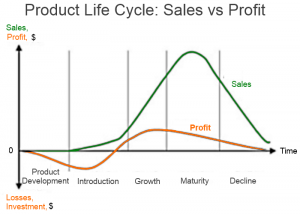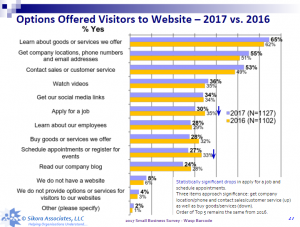
According to a recent report from TOPO, more than 80% of B2B organizations are operating account-based marketing (ABM) programs. It’s clear ABM is no longer a buzzword, but central to the success of B2B marketing engines. And a major key to ABM success is knowing which accounts you should inject resources into, as well as those to pump the brakes on.
Intent data reveals vital information about your target accounts’ research behaviors. This allows you to throttle up your ABM results by answering the question, “Which accounts are more likely to purchase this quarter?” While 25% of companies are deploying intent data to fuel their marketing efforts (DemandGen Report), some confusion around its benefits still lingers.
Let’s cover some ways you can leverage intent data in ABM.
6 ways intent data can supercharge your ABM strategy.
1 – Hop in the driver’s seat: Know which accounts to prioritize today.
Even if you’re confident in your ideal customer profile (ICP) and target-account selection, without intent data you’re missing valuable information about who’s ready to buy in the near term. Intent indicators help you avoid spinning your wheels prospecting an account that looks great on paper but isn’t yet ready to purchase. Those accounts can be de-prioritized, so you can focus efforts and resources on the accounts exhibiting buying signals today.
By deploying your first-party data in conjunction with third-party intent data, you’ll unearth new decision-makers at target accounts and reveal new companies within your ICP that are actively researching your product or service categories. Additionally, your team can uncover accounts that may have been missed when you first built your account list, or construct audiences similar to the accounts in your existing database. All accounts can be scored and categorized by the levels of interest they’re showing. From there, you can segment accounts, tailor messaging to their specific wants and needs, and prioritize sales and marketing outreach activities.
2 – Eliminate roadblocks: Engage contacts more efficiently.
Despite the name account-based marketing, ABM still requires engaging contacts at those accounts. Once you’ve used intent data to prioritize your target accounts, it’s easy to allocate your budget and outreach more efficiently by targeting those same accounts. You can also segment accounts based on top research topics and tailor your messaging with precision.
This will give a boost to key performance metrics like email open and click rates, website traffic and time on site, social media engagement, and programmatic display advertising click-through rates. Media budgets won’t be wasted on contacts from accounts that aren’t currently “in market” to buy your products or services, and in turn, marketing ROI will increase.
In addition to sales reps being pleased with the leads they’re getting (because they’re from target accounts), they’ll also have a better idea of prospects’ wants and needs to ignite strategic conversation. Intent data helps to bridge the gap between marketing and sales to win net-new business.
3 – Put the pedal to the floor: Boost the performance of content marketing efforts.
Customizing marketing collateral to address the individual needs of target accounts is vital to the success of any ABM program. While first-party intent data provides a clear picture of on-site user behavior, absent third-party intent data, you have little visibility into prospects’ activities elsewhere. Third-party intent data captures a wider array of data on prospects’ recent research activity, including what they’re doing before they even visit your website.
With these early-stage insights, marketers can create content that captures attention sooner in the research process, and hopefully get ahead of the competition. Time and resources won’t be wasted creating content target audiences don’t care about, and content personalization opportunities can be recognized and implemented earlier in the buying process for maximized impact.
4 – Fuel high-value prospect turnout at in-person events.
One of the biggest challenges B2B marketing teams face is determining which events will have the highest turnout of high-value prospects and yield the greatest ROI. Intent data gives you the power to source events in geographic regions exhibiting the most interest in your products or services. Pair this with the locations of your key target accounts to generate greater turnout of high-value prospects and enable you to allocate event budget to locations with the highest probability of pipeline impact.
Additionally, intent data can reveal the online research behaviors of targeted attendees. With this information in your back pocket, you can strategically personalize pre- and post-event ABM outreach tactics like direct mail, email and ad campaigns. Moreover, you’ll have the talking points to spark more meaningful conversations in meetings and on the event floor.
5 – Pump the brakes and shorten sales cycles.
The buyer’s decision-making process is complex. Often, deals involve multiple company stakeholders across numerous departments and disciplines. This requires marketing and sales teams to invest a lot of time and effort. Leverage intent data to avoid emailing and calling accounts that aren’t likely to purchase in the near term.
Instead, marketing should use intent data indicators to route accounts to the right nurture tracks. And sales should use intent data to pitch more effectively and eliminate cold outreach activities that prolong meetings and waste time and resources. For instance, if prospects’ online behavior indicates they’re actively researching a particular solution in your product suite, you can leverage that information into a strategic conversation. Surge data recently helped Veristor course-correct a sales pitch, and ultimately close the deal.
6 – Accelerate customer lifetime value.
Solidifying relationships with existing customers is crucial to the success of any organization. We’ve all heard the phrase, “It costs more to acquire a new customer than it does to retain one.” Yet, customer marketing is often an overlooked application for ABM programs.
Intent data gives you the ability to audit your customers’ online behaviors and gain increased visibility into cross-sell opportunities and churn probabilities. For example, you’ll be alerted when customers are researching competitive products and/or services, gaining the opportunity to save the relationship before it’s too late. On the other hand, customer research activity may be the perfect opportunity to proactively cross-sell. Use this information to tune up an ABM campaign for specific existing customers.
Rev your engines: Drive measurable ABM results in the fast lane.
Today’s complex digital marketing arena has increased the data-driven tactics organizations must use to make informed business decisions. The proliferation of marketing and sales technology, like intent data, has given us the engine to drive scalable ABM programs, faster. Employ intent data to boost ABM performance and accelerate past the competition.
Business & Finance Articles on Business 2 Community
(51)
Report Post







